Recording, Mixing and Mastering
Published on 07/03/2022
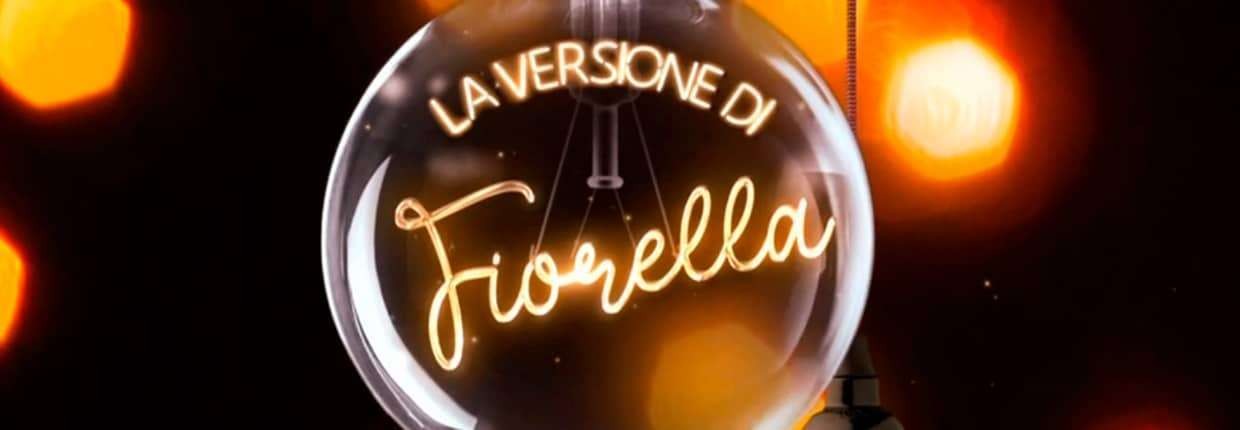
La versione di Fiorella is a TV show ispired by Almanacco del Giorno dopo, a previous Rai1 show broadcasted a few decades ago. Also in this case the program talks about the events that happened in the broadcast’s day or in the same days of the previous years.
Music and stock videos are the main elements of the narrative.
The star of the musical part is Fiorella Mannoia and all the music is played live. We have had the chance to attend the rehearsal sessions to understand which are the key points of this way of performing music for video.
We have been able to do so thanks to the availability of Carlo Di Francesco (Producer and Musical Director of the show) and of Matteo Di Francesco (Drummer of the resident band).
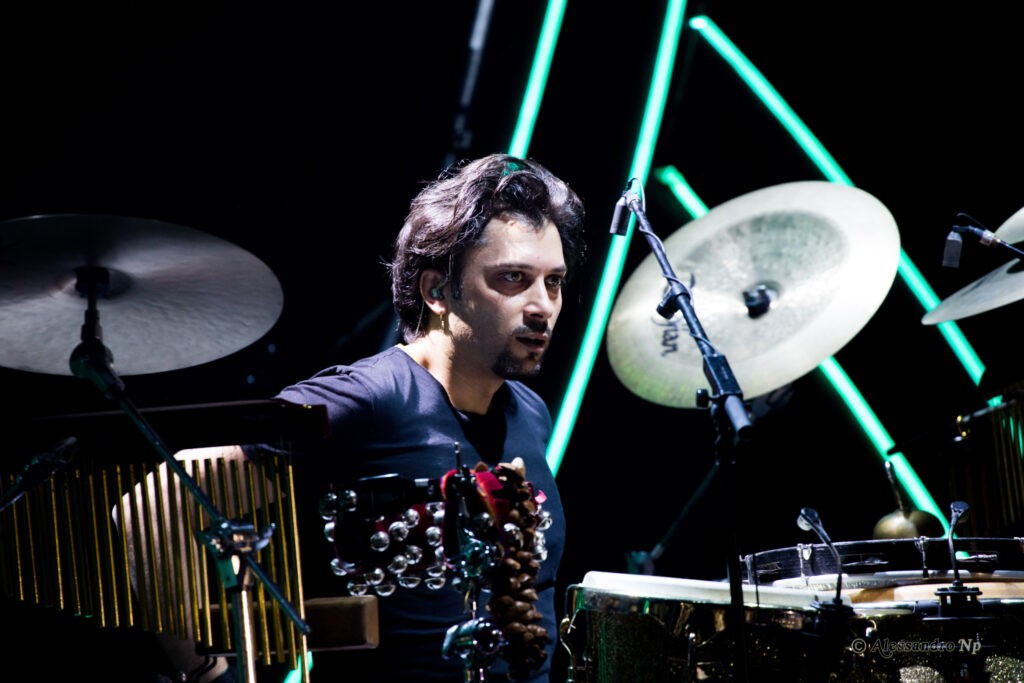

The show is hosted at Studios at via Tiburtina in Roma. The location is the Studio 4 allowing a useful surface of about 500 square meters.
The set is based on a circular shaped shelf structure capable of rotating and opening up when it is the turn of the band to play.
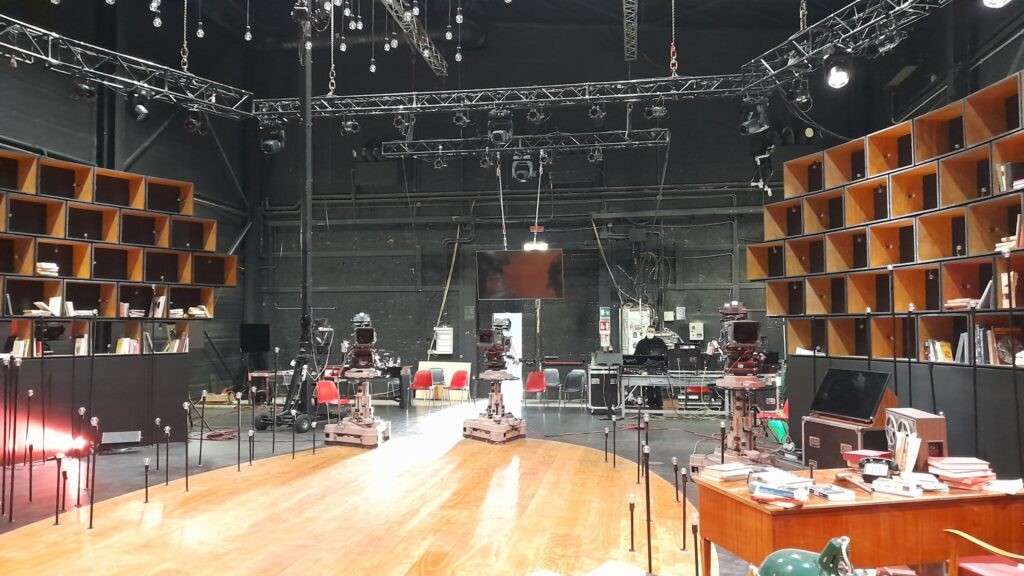
On the opposite side, at about 30m, there are the cameras and the Light Control Room. No amplifiers are allowed on the stage. Drums and percussion apart, there are no sounds capable of bleed into the microphones.
Drums and percussion are screened with plexiglass panels to minimize bleeds. The Leslie speaker used by the Hammond organ is placed in the changing room area.
The horn is miced through two condenser mics while the woofer gets picked by a dynamic microphone (AKG D112).
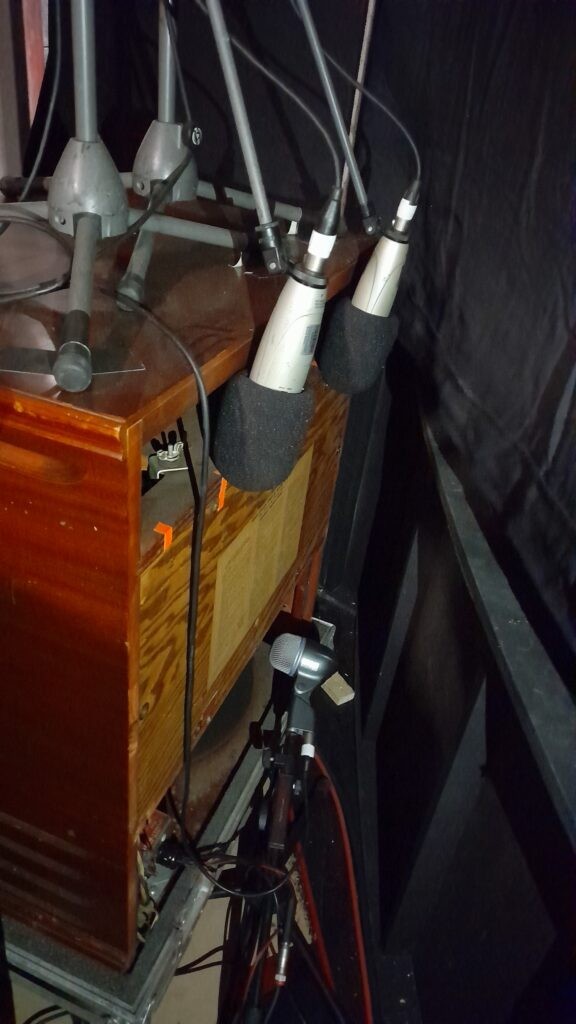
All musicians have their own wired In Ear Monitor IEM) system with dedicated personal mixers. Singers go wireless to simplify movements on the stage.
The Audio Control Room is placed isolated (both spatially and acoustically) to avoid interferences. Stefan Martinovic by Agorà is the SOund Engineer working on an SSL Live console with analog GML processors (compressor and equalizer) on the Master Bus.
Looking at the console’s screens while Stevan was working on the mix we have been able to understand a special attention to the subtractive equalization. All the channels had curves in which critical frequencies were attenuated with very narrow band filters.
The resulting sound was tight and musical that everyone can experience by watching the show on TV or on the web. Every instrument finds its own way in the whole mix.
The monitor speakers were Yamaha and RCF. We had found the latter surprisingly good with a huge and pleasant sound we couldn’t not think of if just looking at their dimensions.
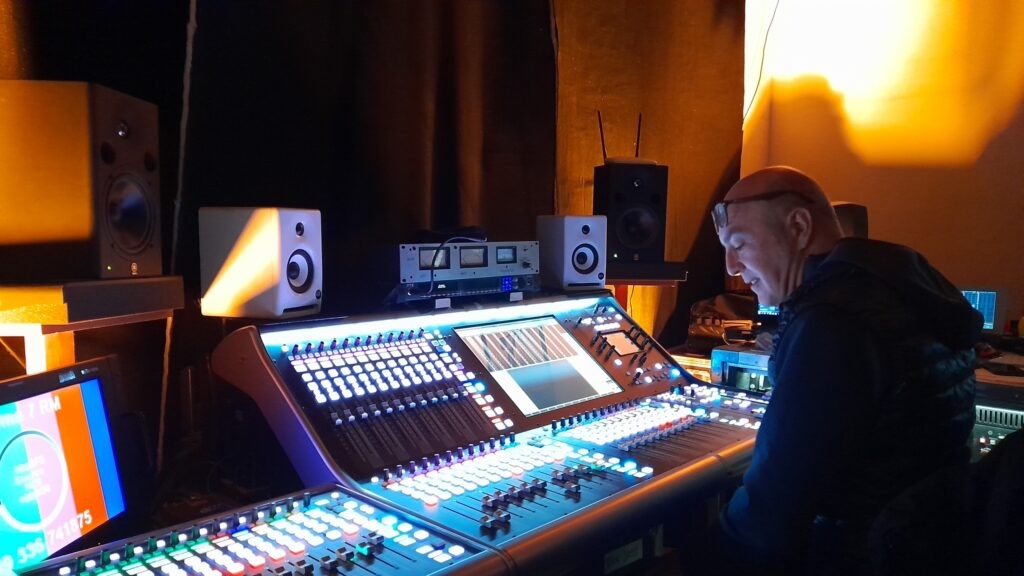
The Video Control Room is placed outside, in the Studios’ square where some RAI’s trucks are located.
The band is composed by:
The performances are all live and there is a deep attention to the sound quality.
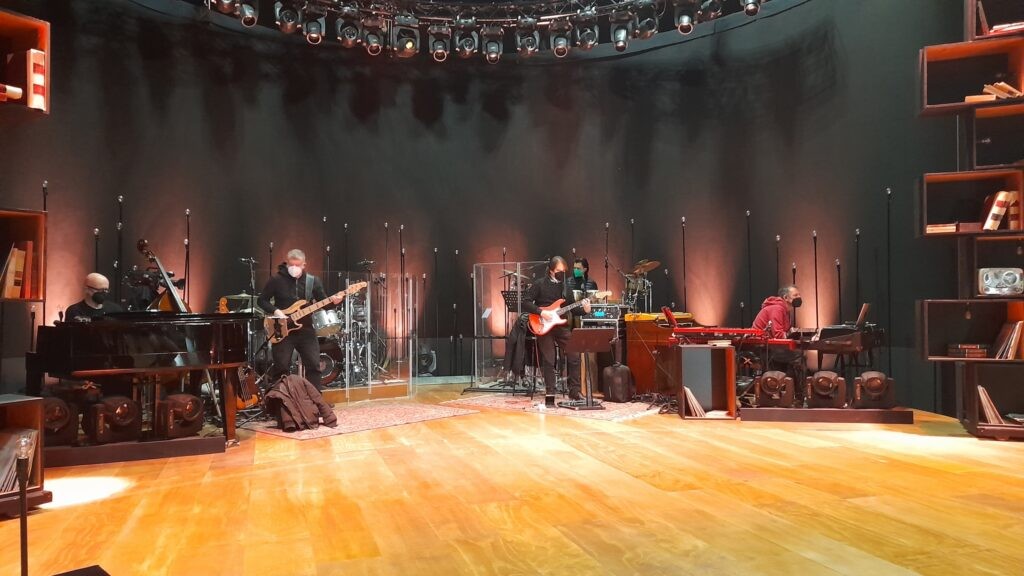
The working sessions are organized in three phases.
In the morning the musicians meet in the studio to rehearse the arrangements without the Guest Artists. The parts are all written and the secure approach shown by the musicians allows us to think that the home work has its important role in the game.
Given that, the set is meant to refine the sounds and the interplay. The band discusses attacks, dynamics and the blend among the various instruments. It is this the moment in which new ideas can arise and they get analyzed and included in the arrangement if agreed
In the afternoon Guest Artists get to the stage. The first part of the set is dedicated to the sound check which is at the same time fast and accurate. These moments are also used to set the right environment for the artists so they can feel comfortable. This is also the moment to rehearse with Fiorella Mannoia. All comments and advice are taken into consideration to get ready for the live performance.
This is also the moment in which all the technical aspects related with the video part and the broadcasting are worked out to ensure a flawless show.
Once the preparation phase is completed is the moment to go “on air”.
As always happens in the live broadcasting shows there is no room for errors and unscheduled events.
The show is entirely available on the RAI Play website. We thought it was interesting to get a little inside the preparation of a live TV Show to have a closer idea about how music for video could be released also with this live approach. Talk to you soon!
Join us today and get 5% off your next order!

Empty cart